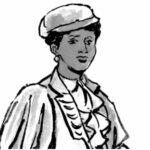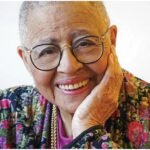Pioneering Black Aviators Build Their Own Plane
The journey to the Robbins Airport began in Detroit, where two Black mechanics – John C. Robinson and Cornelius R. Coffey – bonded over their dream to fly despite rampant discrimination.
After aviation pioneer Bessie Coleman’s tragic death in 1926, Robinson and Coffey moved to Chicago to pursue their mission of training Black pilots.
Though aviation schools rejected their applications due to race, the ingenious duo constructed their own Heath Parasol airplane using instructions from a magazine.
Even building their engine from a motorcycle part, Robinson and Coffey taught themselves to fly flawlessly. Their talent eventually earned them night classes at Chicago’s Curtiss-Wright school.
All-Black Flight School Takes Off in Robbins
Graduating at the top of their segregated aviation class, Robinson and Coffey paid it forward by training fellow Black trailblazers like Janet Waterford Bragg to fly. As racial tensions escalated in Chicago, the aviators founded the pioneering Challenger Air Pilots Association for Black flight students.
In 1931, Robinson and Coffey took their vision further, partnering with the town of Robbins to launch the first-ever Black-owned airport. Volunteers cleared forest, leveled land, and constructed a hangar to make the Robbins Airport a reality. Though a cruel windstorm demolished the site in 1933, its legacy took flight.
Lasting Influence on Black Aviation
After the Robbins Airport tragedy, Robinson and Coffey continued their groundbreaking work. Coffey opened the integrated Coffey Flying School in 1938, teaching Tuskegee Airmen and other aviators. Robinson enlisted in Ethiopia’s air force in 1935 before dying in a plane crash in 1954.
As curator Tyrone Haymore says, the Robbins aviators “meant a lot to what blacks could do and achieve.” Their perseverant journey paved the way for modern Black astronauts like Mae Jemison to reach for the stars.





